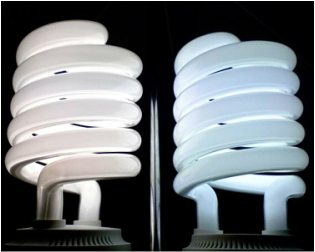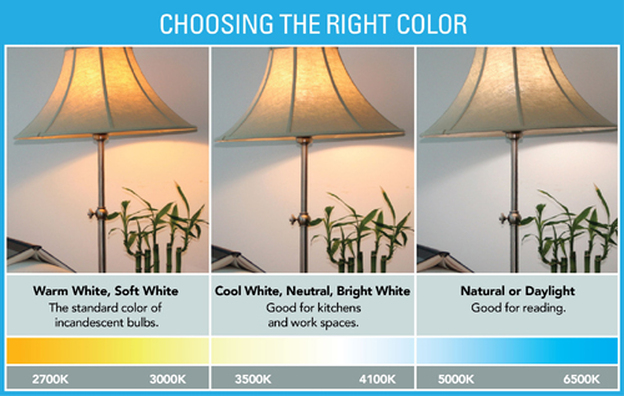 photo: gfhayes photo: gfhayes Do you see a difference in these two light bulbs? Do you think a room will look the same regardless of which bulb is used to illuminate a room? Have you met Kelvin? Kelvin tells you if a room will appear warm or cool. Light warm. Light cool. Warm highlights. Cool highlights. Warm shadows. Cool shadows. Kelvin is used in the measure of the color temperature of light sources. Color temperature is based upon the principle that a black body radiator emits light of which the color depends on the temperature of the radiator. Black bodies with temperatures below about 4000 K appear reddish whereas those above about 7500 K appear bluish. Color temperature is important in the fields of image projection and photography where a color temperature of approximately 5600 K is required to match "daylight" film emulsions. Yes, that was too much information but you need to know Kelvin is really important in your design plans. You see the difference here and you need to pay attention to the Kelvin ratings on bulb packaging. Decide the type of light you want for the function of the space you are illuminating. Here's a pictorial chart from Energy Star that will help you get to know Kelvin a little better. Note that this color temperature discussion is about the compact fluorescent lamp (CFL) specifically. Incandescent and LED lamps have their own temperature range. Sun/day light range will fall at a different level on a Kelvin chart dependent on the light source. Final note - to prevent eye agitation, irritability, and headaches: ALL BULBS/LAMPS IN A SINGLE ROOM SHOULD ALL BE THE SAME COLOR TEMPERATURE.
0 Comments
|
Details
AuthorGeri loves to consume color through art, architecture, photography, and interior spaces of all built environments. She is a museum enthusiast. Exploring new places, cultures, and restaurants will always be a part of her life. Geri loves the creative process of cooking with natural fresh local ingredients and adores the beauty of colorfully plated food. Archives
July 2021
|


 RSS Feed
RSS Feed